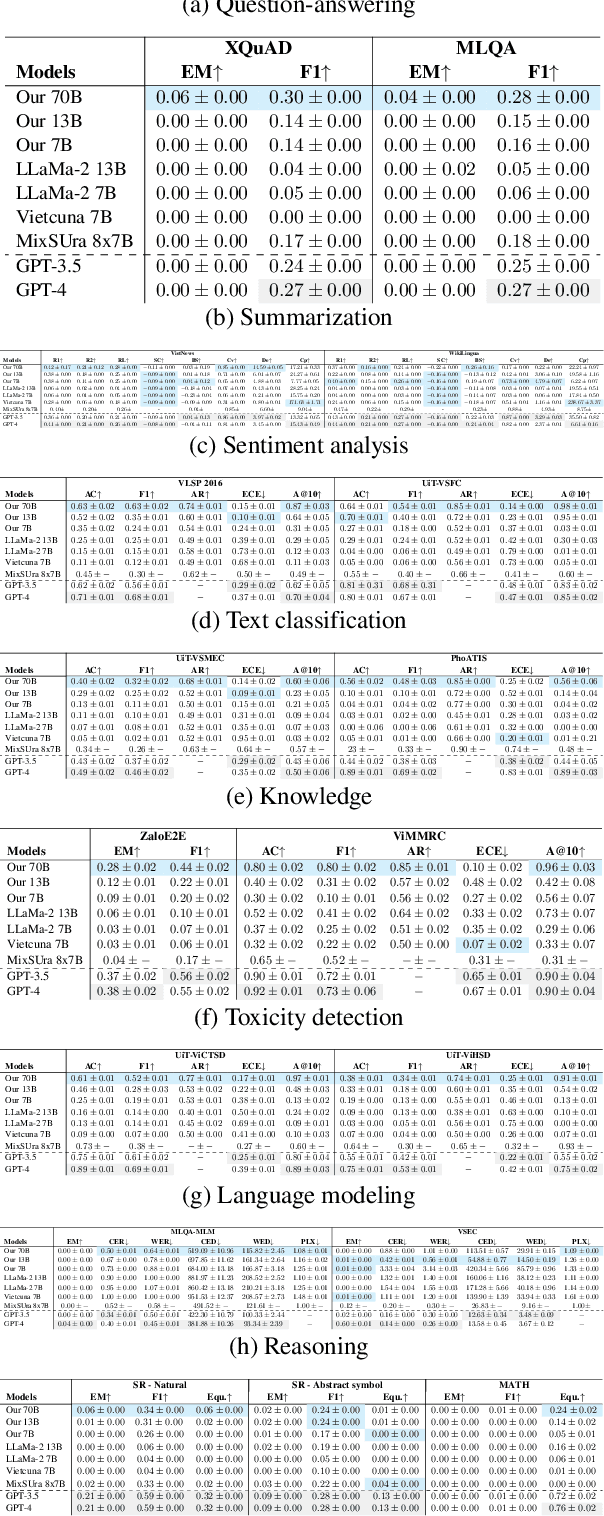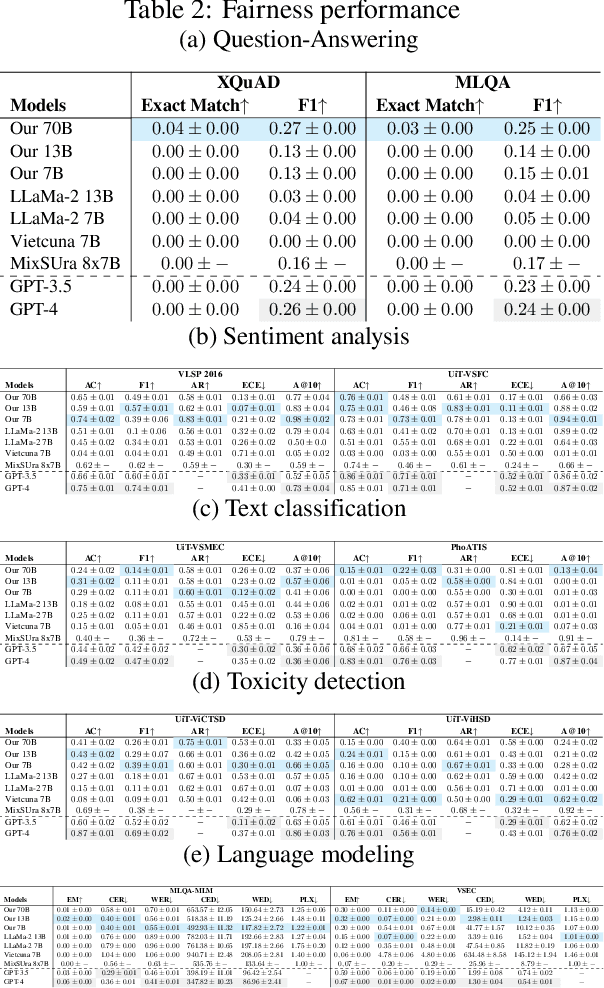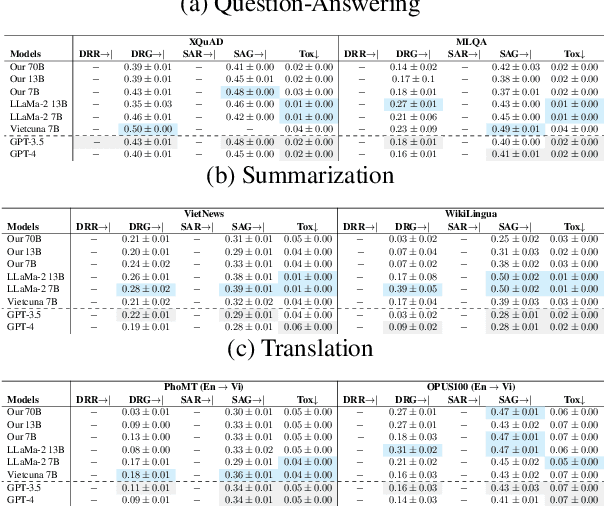Duc Q. Nguyen
Crossing Linguistic Horizons: Finetuning and Comprehensive Evaluation of Vietnamese Large Language Models
Mar 05, 2024



Abstract:Recent advancements in large language models (LLMs) have underscored their importance in the evolution of artificial intelligence. However, despite extensive pretraining on multilingual datasets, available open-sourced LLMs exhibit limited effectiveness in processing Vietnamese. The challenge is exacerbated by the absence of systematic benchmark datasets and metrics tailored for Vietnamese LLM evaluation. To mitigate these issues, we have finetuned LLMs specifically for Vietnamese and developed a comprehensive evaluation framework encompassing 10 common tasks and 31 metrics. Our evaluation results reveal that the fine-tuned LLMs exhibit enhanced comprehension and generative capabilities in Vietnamese. Moreover, our analysis indicates that models with more parameters can introduce more biases and uncalibrated outputs and the key factor influencing LLM performance is the quality of the training or fine-tuning datasets. These insights underscore the significance of meticulous fine-tuning with high-quality datasets in enhancing LLM performance.
xNeuSM: Explainable Neural Subgraph Matching with Graph Learnable Multi-hop Attention Networks
Dec 04, 2023Abstract:Subgraph matching is a challenging problem with a wide range of applications in database systems, biochemistry, and cognitive science. It involves determining whether a given query graph is present within a larger target graph. Traditional graph-matching algorithms provide precise results but face challenges in large graph instances due to the NP-complete problem, limiting their practical applicability. In contrast, recent neural network-based approximations offer more scalable solutions, but often lack interpretable node correspondences. To address these limitations, this article presents xNeuSM: Explainable Neural Subgraph Matching which introduces Graph Learnable Multi-hop Attention Networks (GLeMA) that adaptively learns the parameters governing the attention factor decay for each node across hops rather than relying on fixed hyperparameters. We provide a theoretical analysis establishing error bounds for GLeMA's approximation of multi-hop attention as a function of the number of hops. Additionally, we prove that learning distinct attention decay factors for each node leads to a correct approximation of multi-hop attention. Empirical evaluation on real-world datasets shows that xNeuSM achieves substantial improvements in prediction accuracy of up to 34% compared to approximate baselines and, notably, at least a seven-fold faster query time than exact algorithms. The source code of our implementation is available at https://github.com/martinakaduc/xNeuSM.
 Add to Chrome
Add to Chrome Add to Firefox
Add to Firefox Add to Edge
Add to Edge